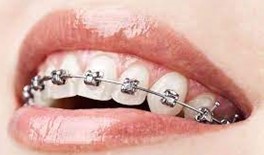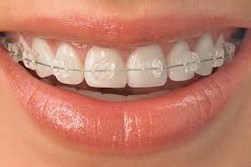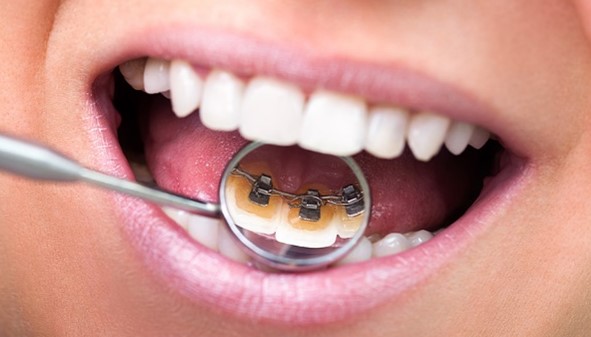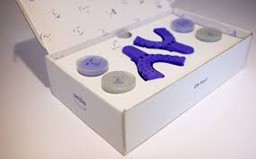What are braces?
Dental braces are devices used by dentists to straighten teeth, correct bites and jaw problems and to improve dental health. An Orthodontist is a dentist trained to treat concerns of teeth alignment and jaw irregularities – sometimes called malocclusions. The Orthodontist is helped by the Orthodontic therapist, who is part of the dental team that works under the prescription of the dentist or the Orthodontist.
Options for teeth straightening.
There are different systems of dental braces, fixed or removable, and following assessment the dentist will advise on the best option for you.
Fixed dental appliances
Fixed dental appliances are brackets bonded on each tooth and they will stay until the end of the treatment. At every visit the orthodontist will change the arch wire, which is a metal wire in an arch shape that it is locked in the bracket with elastic modules. Those are changed at every visit too, and they come in different colours. To move a specific section of teeth the orthodontist may also use elastic bands to wear during the day and remove when eating or to wear them only at night.
We can divide the fixed orthodontic appliances into Metal braces, Clear braces and Lingual braces.
Metal braces, also known as train track, are the traditional dental treatment option to straighten teeth (commonly used for teenagers). Cost for fixed metal braces can be between £2.000 and £5.000.

Clear braces, same as metal braces, but are ceramic brackets so they are less noticeable. The orthodontist will also use a white or cream colour wire and clear elastic modules. Cost for clear fixed braces can vary between £3.000 and £6.500.

Lingual braces are metal brackets placed on the inside surface of the teeth (lingual and palatal), so they are mostly invisible. Lingual braces are not provided by everyone as only specific dentists offer it. The cost for lingual braces is between £6.000 and £10.000.

How long do fixed braces take?
Straighten teeth with fixed braces can take from six months to two years or more depending on how severe the crowding and the malocclusion is. This system is also used in very severe cases where teeth are unerupted or a jaw surgery is required.
Removable dental appliances
Removable dental appliances are plastic made trays that you have to wear at least 22 hours a day and remove them every time you eat or drink (you can drink water with the trays in). Different brands are offering this treatment like Invisalign, Smile Direct Club, 6 Months Smile, Sure Smile, Clear Correct, Spark aligners.
From those mentioned, Invisalign is definitely the highly rated removable appliance, used by most dentists all over the world. The dentist, after assessing if you are qualified for the treatment, will take a scan or impressions of your teeth and a set of photos to plan the perfect treatment for you. All these information are sent to Invisalign that will manufacture the aligners and after two weeks the are sent to the dentist and ready to be fitted. Most likely attachments are needed. Those are small dots of teeth colour material that is attached to the required teeth and will allowed them to move accordingly to the treatment plan. Those attachments are removed at the end of the treatment. During the duration of the treatment, you will visit your dentist (usually every 3-4 weeks) to make sure teeth are moving accordingly and aligners are fitting properly. The duration of the treatment depends on how severe the case is, this can vary from six months to one year or more. Same for the cost, between £1700 – £6000, depending on how many aligners are required to finish the treatment.

Another highly advertised system is Smile Direct Club. You can choose between having a scan taken or receiving an impression kit at home. Once the aligners are produced are sent to your home address, all of them. This is a remote system, so you won’t be seen by a dentist, you won’t have any attachments placed on your teeth and you’ll have virtual progress checks. The treatment will vary for 4 to 10 months, and the price is between £1500 – £1700.

Fixed vs removable?
With the fixed braces is easier to reach the perfect result in the shortest time, but bear in mind that this will change from person to person and form the severity of the treatment. With fixed appliances the Orthodontist has more control on how teeth need to be moved where with the removable appliance this is not always possible as they are digitally made. With the removable appliances there ae two factors to consider which are the consistency of the patients on wearing the aligners and the amount of time the aligners are removed for eating and drinking. Fixed braced instead, are always in place. Something else to consider is the risk of staining which is higher with the removable appliance if teeth are not brushed after every meal before butting the aligners back in. You can have staining with fixed braces to if teeth are not cleaned properly around the brackets.
How do I stop my teeth moving back?
After the treatment is completed (for both fixed or removable), the dentist or orthodontist will and advise you the have fixed retainers place and removable retainer to wear every night. The fixed retainer is wire that if place only on the front teeth, usually the front four teeth on the upper arch and front six teeth on the lower jaw. The removable retainers are plastic trays for both upper and lower teeth and is advisable to wear it every night for the rest of your life. 😊
Is it better to see a Specialist Orthodontist?
For fixed dental appliances is better to be seen by an Orthodontist. For removable dental appliance doesn’t need to be done by a specialist orthodontist, it can be done by a qualified dentist. It is important to look for photos of before and after treatment as well as reviews to verify the dentist you are seeing.
Risks of fixed/removable with GP or Orthodontist?
Having your teeth straightened with a fixed or removable appliance has some risks. Brushing your teeth while wearing the braces can be difficult and, if you don’t clean them properly, you have higher changes of gum diseases and recession of the gum, teeth decay and the possibility of having root canal treatment is the decay is affecting the pulp of the tooth and staining. Another risk of having your teeth moved is root resorption, this means that as your teeth are moving can cause the root to shorten by approximately 1mm.
Which approach is best?
It is recommended to be seen by a dentist to assess your oral health first and be advised on which is the best type of treatment for you. In the case of removable appliances, it is best to be followed by a dentist during the procedure.
FAQs
How much does it cost to straighten teeth?
Straighten teeth can vary from £1.700 to £10.000 in UK, depending on the type of system used and on the duration of the treatment to achieve the desired result.
How long will it take to straighten teeth?
This depend on how severe the crowding and malocclusion is. Straightening teeth can take from three months up to 5 years.
Can I straighten teeth as an adult?
Yes, it is possible to straighten teeth as an adult and there is no upper age limit on this.
Are braces painful?
Having braces can be painful, specially at the beginning of the treatment, it will take few weeks to get used to them and after every dental appointment you can experience some discomfort.
How do I stop my teeth moving back after braces?
The dentist or Orthodontist will advise to have fixed and removable retainer to avoid teeth moving back after treatment.
Can veneers straighten teeth?
Yes, they can. In mild cases, especially if the main concern is the spacing in between the front teeth, veneers can be a fast option. They also would correct any tooth shape related issues.
What is the fastest way to straighten teeth?
In most cases fixed braces are the faster way to straighten teeth. Veneers are considered a method in teeth straightening and would be the fastest option, however, the teeth themselves are not moved as it is an imperfect solution to crowded teeth.
Why should I see a dentist if I can order my aligners online through Smile Direct Club?
The dentist, before starting any type of straightening system, will assess your mouth with a dental health check and the necessary X-rays to identify if there is dental health concern that needs addressing. Without this, braces can be problematic and cause further dental issues in the future.
What should I do if my aligner or brace breaks?
In case of breakages of the aligners or if you lose them, another set can be ordered but this may require and extra charges and may slow down the process. For fixed braces, you would see the orthodontist or the orthodontic therapist which will replace the brackets for you.
Why are my teeth crooked?
One of the of the most common reason why your teeth are crooked is genetic, it can be hereditary. Also it can be because as a child you had the habit of sucking the thumbs, if you have tongue thrusting (it means if when swallowing your tongue doesn’t press against the palate but behind the front teeth), if you are grinding your teeth at night or during the day due to stress, if you have a poor oral hygiene can cause gingivitis and, if severe, can cause teeth lost and shifting of the rest of the teeth. Malnutrition is also a cause of teeth crowding, if your wisdom teeth are coming out and there is not enough space can cause movement on the rest of the teeth.
What food should I avoid with a brace?
It is recommended to avoid hard and sticky foods as the brackets can come off. It is also advised not to bite in foods like bread or apples, best to cut them in small pieces.
How should I clean my brace?
When wearing braces, you can clean your teeth with a normal soft toothbrush, or a toothbrush specifically designed for braces. It is very important to use interdental brushes, normal floss and super floss after every meal.
How to clean retainers?
Clen your retainer every morning just with your toothbrush under running water (not hot water) and one a month you can use a denture cleaning tablet that will help removing staining on the retainers.
Can I get my wire retainer removed?
Yes, you can have the fixed wire removed at any time, but it is important to wear the removable retainers every night as teeth can move back.
What is the safest brace system?
There is not a specific system that is safer than the rest, all can be safe if done in the right way and with the right cosmetic dentist or orthodontist.
Want to know more?
Get in touch to enquire about our services or to book an appointment.


